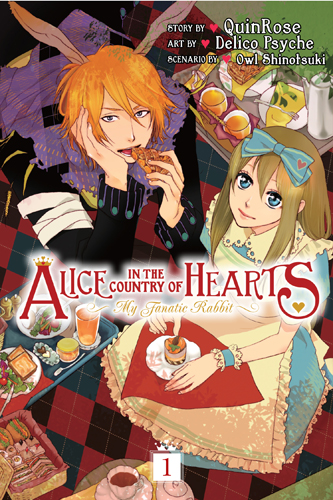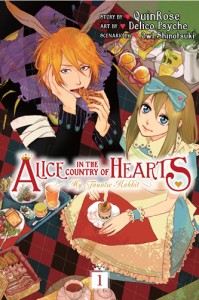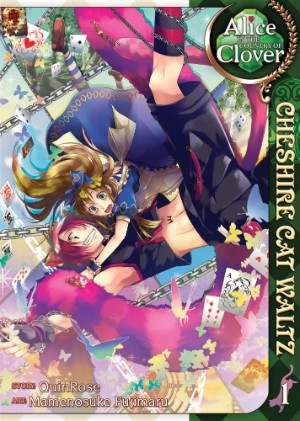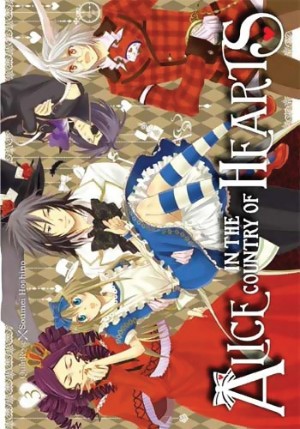By Quin Rose, Owl Shinotsuki and Delico Psyche, based on the game by Quin Rose. Released in Japan as “Heart no Kuni no Alice ~My Fanatic Rabbit~” by Mag Garden, serialized in the magazine Comic Blade Avarus. Released in North America by Yen Press.
Well this has certainly turned into a franchise, hasn’t it? Given sales in North America seem to be relatively strong (for manga), we shouldn’t be surprised. Yet here is the third spinoff series from the original Alice manga, with promises of a fourth this spring and two more in the summer. Each focusing on a different pairing for our heroine, in the finest otome game tradition. And each managing to also deal with the main serious game plotline, where your secondary goal is to figure out that Alice actually regaining her memories is BAD BAD BAD. And with one exception (sorry, Bloody Twins, you still suck), the spinoff manga have done an impressive job of doing just that.
Not that you would know it from the first half. And I try not to begrudge the series its romance – after all, that *is* the other half of the goal of the games, and its primary audience is women who like to see hot guys of various types (all psychotic, but in different ways!) fall for our stand-in-for-the-reader heroine. This time around, it’s Elliot March, aka the march Hare, who is Blood Dupre’s #2 at the Hatter Mansion. As with the rest of the cast, Elliot is drawn to Alice being different (her ‘outsider’ status) and both he and Alice starting to fall for each other while simultaneously not knowing what that is. You know the drill – “what is this strange pain in my chest”, etc.
Things start to change as we are reminded that the hatter clan is a mafia organization – and that Wonderland has a very casual, even callous view of death, given that it’s impermanent (well, relatively). Alice has been trying to distance herself from the fact that she’s living with a bunch of killers, so Blood (deliberately, I suspect) makes absolutely sure that she gets this shoved in her face, and knows that Elliot is a trained killer as well.
Then comes the part of the book that really knocks it out of the park. For all that Alice is the heroine in Wonderland to whom all the guys are attracted, she has amazingly low self-esteem, constantly living in the shadow of her perfect big sister (whose fate, again, is alluded to but never specified by the other men in the cast) and having to be around Blood, who physically resembles her old boyfriend/crush/whichever. Elliot notices that Alice gets depressed every time this comes up, and offers a solution. And once again, the manga (and no doubt the games) remind you that it’s not just a case of picking a hot guy and living sexily ever after – these people are SCREWED UP. Wonderland is a world of twisted values about death and what it means to be alive, and they’re not attracted to Alice’s personality or beauty – they’re attracted to Alice as she has a beating heart rather than a clock.
After this, the rest of the manga isn’t quite as interesting – it doesn’t help that Peter shows up, and is in ‘obsessive’ mode. It does end on a good cliffhanger, though, with Vivaldi calling for Alice’s head even as Elliot races to the Hatter Mansion to save her. There’s only two volumes in the series, so everything will wrap up nicely next time, I imagine. But this series continues to show how to make a really interesting romance series – having you constantly question everything about the heroes, heroine, world, and premise. Nice job.





